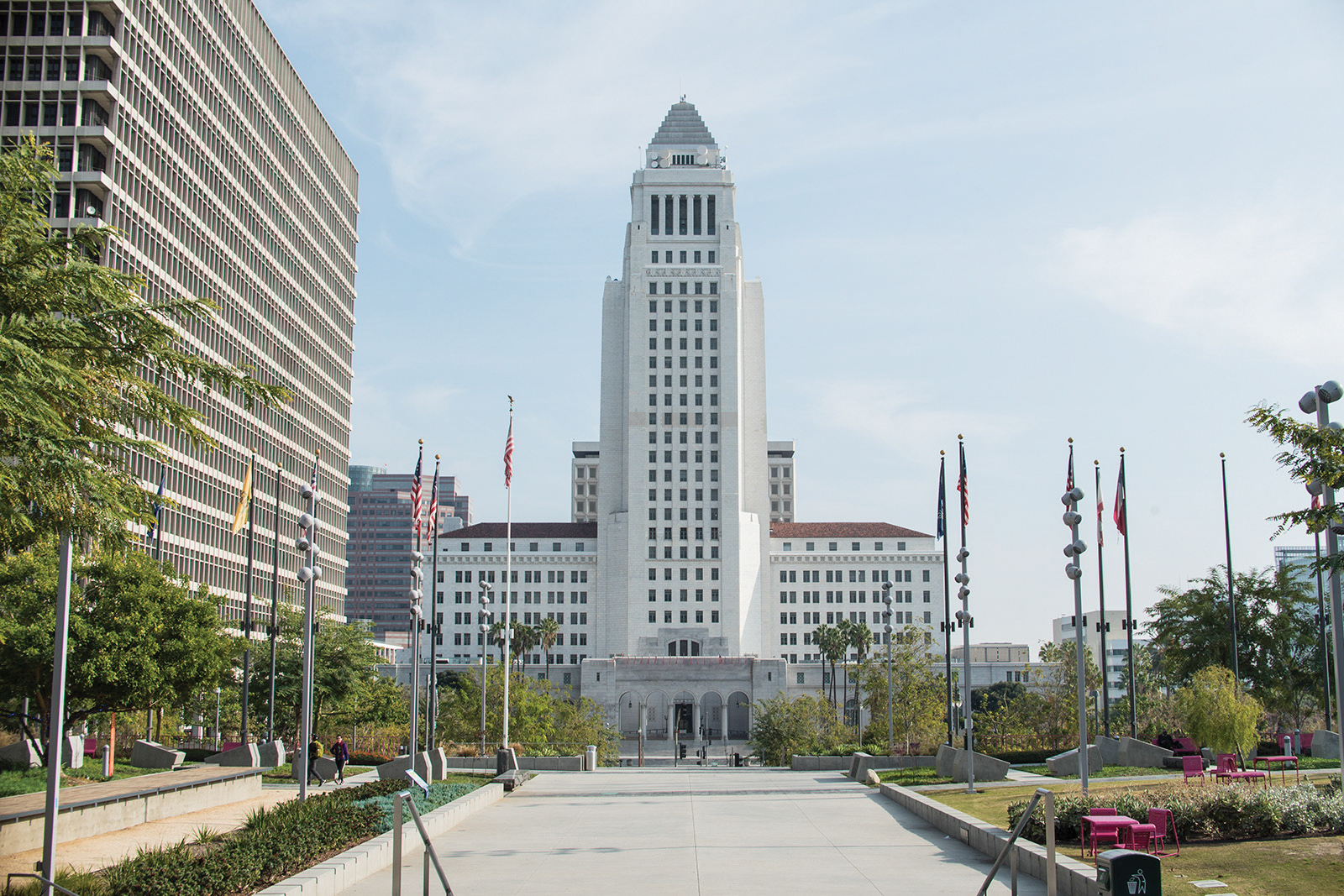Solutions for LA’s homelessness crisis can’t neglect environmental protections

Rectifying rising homelessness rates is a sincere priority among the Los Angeles City Council, but it should not come at the cost of bypassing established environmental regulations and standards. LA City Council owes it to the people to find a reasonable solution. (Daily Bruin file photo)

By Karina Seth
Jan. 14, 2020 11:04 p.m.
California has been given the short end of the stick, facing a homelessness issue on top of a global climate change crisis – but a proposed bill will solve neither.
California assembly member Miguel Santiago introduced Assembly Bill 1907 last week, which would allow low-income developments to bypass regulations outlined in the California Environmental Quality Act. Proponents of the bill, which will be voted on in spring, hope it will expedite the construction of homeless shelters.
Housing insecurity is on the mind of many Angelenos. The statewide population of people experiencing homelessness has jumped nearly 17% since 2018, leaving another 150,000 California residents homeless. In Los Angeles, the population has jumped by 16%. And as rent keeps increasing, the population of people experiencing homelessness skyrockets.
The CEQA is set in place to preserve California’s environment through the transparency of projects and alternate proposals whenever a potential development could impact it. Though a commendable effort, the CEQA has stalled the development of projects intended to help the homeless.
Enforcing environmental regulations is necessary given the threat of climate change, and homeless populations need all the help they can get. That being said, AB 1907 is essential for the coming years, but that’s all it should be – a short-term option. Bypassing environmental regulations has been California’s approach to rectifying the consequences of rising homelessness as it reaches an all-time high. And while that will serve the current population, legislators need to ensure that this does not set precedent in the years to come.
Homelessness and climate change are more intertwined than ever – and the way politicians approach one affects the other.
Gary Blasi, a professor of law emeritus at UCLA, said inaction will only mean environmental and housing consequences in the future.
“Looking at all the effects on resources, this bill would reduce government costs,” Blasi said. “Dozens of research studies have shown that it is far cheaper to provide housing to people than to respond to the consequences of homelessness.”
Creating homeless shelters under AB 1907 will mean bypassing environmental regulations – but not doing anything comes with its own set of environmental consequences. In October 2019, the Environmental Protection Agency notified San Francisco County that it had violated the Clean Water Act because of drainage from homeless sites.
Environmental consequences will exist either way, but in the form of AB 1907, the state can at least make a dent in the homelessness crisis.
Gov. Gavin Newsom recently proposed a $1.4 billion plan to help combat homelessness, which would allocate money to help cover rent for people on the brink of homelessness. This shows California is taking baby steps toward preventative measures.
Even with a billion dollars thrown at the issue, it hasn’t bought much more housing than it began with. Proposition HHH cost taxpayers $1.2 billion with the hope of building 10,000 new homeless housing units in Los Angeles, but only one has been built in the past three years.
Housing is a slow fight, which makes bills like AB 1907 all the more necessary to play catch-up. But as we move from remedial to preventative laws, the future safety of the planet shouldn’t be another added cost.
Lester Squier, a first-year political science student, said that the bill could cause more issues than it intends to solve.
“I think that more helpful solutions to the homelessness crisis would be to find other less regulated areas to develop this housing, or renovate and fix any existing solutions to minimize the effect on the environment,” Squier said.
The safety of the environment is a priority that needs to be balanced with reducing the severity of the housing crisis, not sacrificed in place of it. State leaders are busy cleaning up messes they created. But when those messes are clean, legislators need to realize the connected nature of environmental and housing policy.
Low-income communities are disproportionately affected by climate change – the amount of climate-related disasters resulting in over $1 billion of damage has been increasing in recent years, and low-income housing affected by these disasters is the least likely to be rebuilt.
“CEQA has been abused over the decades and has gotten in the way of our communities building the housing they need,” said Michael Skiles, an executive officer on the North Westwood Neighborhood Council. “It has come to hurt the environment because it has forced people to commute from far distances, which has created traffic gridlock, which is a reason why (Southern California) is perpetually full of smog.”
Both affordable and environmentally sustainable housing can exist. Politicians just need to be considering alternatives instead of giving up on environmental protections altogether.
The recent movement toward green affordable housing is a step in the right direction for low-income individuals. “Green gentrification” is a trend where outdoor developments in an area attract higher-income individuals to low-income areas, which unintentionally inflates rent in those communities. To combat this, companies are encouraging the implementation of energy-efficient infrastructure in low-income housing to reduce energy costs and increase sustainability.
“I’m supportive of mitigating barriers to getting homeless shelters up – it’s weird that (there) are exemptions for CEQA for sports stadiums, which are more massive and have a bigger impact on neighboring areas (than low-income housing),” Skiles said. “It’s a sad reflection of the priorities of the community.”
Opponents to bills like AB 1907 view housing and environmental issues as black and white. But as the climate deteriorates, the homeless population grows. It’s not fair to prioritize one issue over another – especially when they are both cyclically connected and exist in a gray area.
Helping the environment and the people who live in it aren’t mutually exclusive priorities.
But if they continue to be treated as such, both will suffer.


